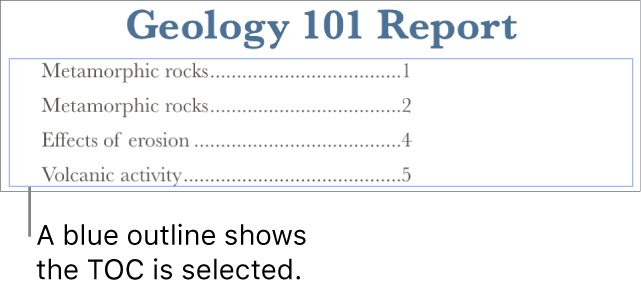
- Generate table of contents word document how to#
- Generate table of contents word document update#
- Generate table of contents word document manual#
- Generate table of contents word document full#
Step 1: In order for Word to identify the headers and subheaders for your Table of Contents, you need to apply the appropriate "Heading" styles to your chapter and sub-chapter headers.įor example, to mark a chapter title as a Level 1 Heading, first select the text that you would like to appear as the chapter heading in the Table of Contents by clicking-and-dragging your cursor over it to highlight it.
Generate table of contents word document manual#
Setting this up can be a time-consuming process, but if you are writing a lengthy document that will go through several drafts, the automatic Table of Contents can save you a lot of manual revising each time your page numbers or chapter titles change. There’s no built-in function for basing a table of contents on multiple documents.Microsoft Word has an automatic table of contents function that can automatically generate a table of contents for your document, provided you correctly tag the chapter headers and sub-headers that you wish to show in your table of contents.

It’s not a perfect solution, but it works.
Generate table of contents word document update#
If you modify any of the referenced documents, you might have to update the beginning page number of some, maybe all, of the documents. It might be a bit time-consuming if you have many documents. That calls for a bit of manual manipulation, but it’s not difficult. For instance, in this case, I’d start the second document with the page number 2, instead of 1. When using this technique, you’ll probably want to alter the page-numbering scheme for all but the first document. That’s because both documents in this example have just one page, and I didn’t alter the page-numbering scheme for either – both documents begin with page number 1.
Generate table of contents word document full#
Otherwise, be sure to enter the file’s full path.Īt this point, you won’t see anything, but don’t worry. If the document’s in the same folder as the table of contents document, check the Path Is Relative To Current Doc option.In the Filename or URL control, enter the name of the first document you want to include in the table of contents.In Word 2003, choose Field from the Insert menu. Choose RD from the Fields Names list (RD stands for reference document).

From the Quick Parts dropdown (in the Text group), choose Field.In the table of contents document, insert a Reference Document field for each document that you want to include in the table of contents, as follows: When you’re ready to build the table of contents, open a new document and save it using a descriptive name to identify it as a table of contents document. This step isn’t necessary, but it simplifies things a bit. You’ll use fields in a separate table of contents document.īefore you start, if possible, save the documents that comprise the table of contents to the same folder. If you’re working with two or more documents, Word’s table of contents feature won’t work the same way, but it’s not impossible – it isn’t even hard.

Generate table of contents word document how to#
In the last blog post, I showed you how to generate a table of contents based on built-in heading styles. I is possible to create a single table of contents for multiple Word documents, it just requires an extra step or two. How to create one table of contents from multiple documents


 0 kommentar(er)
0 kommentar(er)
